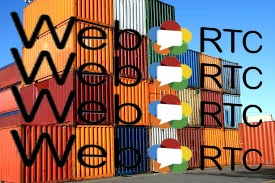 Many have wondered about why big players in the Internet, communications, and device industries would not quickly get on board with WebRTC and rapidly promote it is a standard since WebRTC has so many supposed benefits. We often hear about Apple’s lack of comment on WebRTC and Microsoft’s alternative approach called CU-RTC-Web.
Many have wondered about why big players in the Internet, communications, and device industries would not quickly get on board with WebRTC and rapidly promote it is a standard since WebRTC has so many supposed benefits. We often hear about Apple’s lack of comment on WebRTC and Microsoft’s alternative approach called CU-RTC-Web.
I learned a lesson about standards from an unusual source: “False Economy: A Surprising Economic History of the World”. This book, by Alan Beattie, discusses why countries, economies, and continents are the way they are: not because of predetermined courses, but by the choices they made.
In one section of this book there is a discussion of the now boring and dull shipping business. Before the mid-1950’s, most shipping involved “break-bulk” cargo in which every time the items being shipped crossed a border or a dock, they had to be unpacked, carted to a new location, and repacked in a different shipping container. This break-bulk method of cargo shipping accounted for at least 10% of the total cost of the items shipped in global commerce. Interestingly, about half of the cost of global shipping came in a 2/10ths mile stretch of the dock where the cargo was unloaded and reloaded.

Around 1956, some enterprising entrepreneurs decided that creating standardized shipping containers would help efficiency and drive down the costs of shipping. Consequently, several major shipping companies introduced their own version of a shipping container. One company standardized on a length of 35 feet for its container while another used 24 feet and still another used 17 feet containers.
But, there were still obstacles to using standardized containers. Stevedore at the docks fought tooth and nail against standardization because it threatened their livelihoods. In the early 1950’s, New York had over 290 docks controlled by unionized labor. To bypass New York’s labor unions, a new container port was built in New Jersey where ships could dock and containers could be taken off by crane and immediately placed on trucks for transportation to the final destination.
Although this new dock was helpful, it did not solve the standardization issue completely. Competing shipping companies still had differing container sizes.
It was only when the U.S. military began specifying the dimensions of the standard shipping container shippers could use when transporting military item did everyone get in line with eight-by-eight feet containers in 10, 20, 30, or 40 foot lengths. It took someone big enough and with enough economic clout to cause everyone to adopt the new standard or go out of business.
The Analogy with WebRTC
Today, we see many competing standards for video. Skype has its own. There is H.264, VP8, and a variety of other codecs. Some companies even have their own proprietary tweaks on “standards-based” codecs. Vidyo has its own version of the standard H.264 as does Microsoft, Polycom, Cisco, and others.
Like the contents of shipping containers, when video comes to a border or boundary, it often has to be unpacked, transported, and re-encoded in a different format so that the video packets can arrive at their destinations properly. As occurred in the shipping industry, these small border segments along the entire path are where a significant amount of the cost for video occurs with the need to buy transcoding gateways and session border controllers, which have become the stevedores of the video industry.
And, like the shipping industry, some enterprising vendors have bypassed the existing video players by creating their own dock, so to speak, in the form of a video protocol called WebRTC. As in the shipping world where standardized containers avoided the need unpack/repack steps, WebRTC eliminates the need to download a video client since the WebRTC protocol is built into the Google Chrome and Mozilla Firefox browsers.
Just like stevedores who fought against container standardization because it threatened their livelihoods, Microsoft and Apple are either fighting against or ignoring WebRTC because it threatens their particular interests. And so, we have at least two ports, in longshoreman parlance, one port or group supports the new WebRTC standard while the other port or group of companies does not.
The moral of the analogy of WebRTC and the shipping container is this: even though the WebRTC standard is being promoted, and even though there are some places built where it can work, until there is someone big enough to enforce it (like the U.S. military did in container standardization) and there is economic penalty to those who do not adopt the standard, we will continue to see competing standards and efforts. As long as one or more of the major vendors believes it can make more money by not adopting the WebRTC standard there will be no universal implementation by all of the browser manufacturers.
Beattie concludes his discussion of the shipping industry with these words, “Containerization didn’t just carry existing cargo more quickly and cheaply; it enabled a radical shift in the way that companies did business”. In like manner, WebRTC may enable a radical shift in the way companies do business, but we will only find out if WebRTC truly becomes a broadly accepted standard. Like the shipping industry, standardizing on WebRTC may take nudges from powerful organizations with enough clout to impact the economic wellbeing of those standing it its way.


